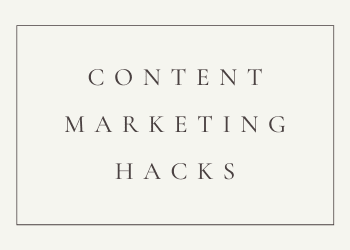Startup Your First Steps
Introduction
Internet marketing is something a lot of people are interested in getting started in, but their eyes glaze over once they hear terms like FTP, domain names, hosting, script installation… all those terms that all internet marketers have to learn eventually, but seem so daunting to a beginner.
In this guide, you’re going to learn about some of the most important things you’ll need to know as a newbie to internet marketing.
We’re going to cover topics such as domain names, hosting, graphics, images, FTP and much more. We’ll cover most of the basics that you need to get started in internet marketing.
Everyone’s a pup at the startup.
Are you ready to run with the big dogs?
Then let’s get started!
Domain Name Registration and Management
The first thing you’ll likely need to know is how to get a domain name. Your domain name is your website’s street address, basically. It tells web browsers how to find your website.
A domain name looks like this >> your-domain.com
It’s web address would look like this >> https://www.your-domain.com
While you could get away with using a web address such as:
https://www.wordpress.com/your-business-name
The fact is there are some problems with this.
First of all, it doesn’t look as professional as using your own domain. If you’re hosting on a free platform like WordPress or Blogger, you may find people aren’t as likely to trust you, especially if you’re selling something.
Another potential problem is that free hosts have a variety of different rules you must follow. Some of them don’t allow you to use advertisements on your site. Others don’t allow you to use plugins. These rules and limitations can be extremely restrictive and hamper your marketing efforts greatly.
Finally, if you don’t have your own domain on your own hosting, you will be extremely limited with what you can accomplish with your website itself. Running WordPress on your own domain will allow you to use custom themes and plugins on your site, for example. While hosting on the WordPress servers limits you quite severely.
There are many different places to buy a domain, but not all are created equal. Some have higher fees than others, while some use tricky or deceptive means to entice buyers to use their services.
The most commonly used registrar by internet marketers is:
NameCheap has very fair prices, and they are known for being honest and having excellent customer service. Additionally, you can Google “NameCheap coupon and you will get a discount code that will take a fair amount of the purchase price of a new domain name.
WhoisGuard
NameCheap offers a service called WhoisGuard that comes free with a brand new domain. What is WhoisGuard? Well, it protects your private information from potentially prying eyes, spammers and stalkers. This service is absolutely invaluable when it comes to privacy.
There are a couple of minor potential drawbacks to using it.
Some people may not trust you if you use it, so it may slightly lessen sales. But the odds of someone checking your WHOIS information before they buy from you are relatively slim.
Additionally, some people say Google may penalize your site if you are using WhoisGuard, but there is no real evidence of this. It is purely anecdotal. This is nothing to worry about for most people, and unless you are in an extremely competitive niche SEO wise, it’s not worth considering.
If you don’t want to risk disgruntled customers or crazy stalkers showing up at your front door, this is a great way to protect yourself.
Choosing a Domain
First of all, don’t be suckered into buying anything but a domain that ends with the .com extension. It’s been proven that domains that end in other extensions have a tougher time ranking well in the search engines. Not only that, but if you want people to be able to remember your domain if they want to come back and have forgotten to bookmark it, you really need to have the .com version. It is what people instinctively visit.
Ideally, you want to choose one of two types of domains:
- Short, unique and brandable
- Keyword rich
A short, unique and brandable domain would be something that is one or two words, easy to spell and remember, unique enough to stand out in people’s minds so they remember it, and clever enough to be highly brandable.
Here are some examples:
- Twitter.com
- Pinterest.com
This type of domain is best for online stores, social media sites, and other types of sites that focus on products or services more than content.
Keyword rich domains generally contain one major keyword phrase that you’d want to rank well for in the search engines. These don’t work as well for SEO as they used to, but are still beneficial to some degree.
Examples would be:
- HowToBuildATreehouse.com
- FreeGroceryCoupons.com
- BestCasseroleRecipes.com
I have no idea if any of those are currently being used, but they are examples of the types of domains you might want to get if you were trying to rank for those phrases.
Hosting
If you buy a domain name, you must have somewhere to host it. If your domain is your street address, your hosting is basically the building in which your company resides at that address.
There are many reputable hosting companies to choose from, but perhaps the most popular among internet marketers is HostGator.
HostGator has a very affordable plan called Baby Croc that costs about $10 per month and gives you all the space and bandwidth the average person can use. If you happen to use more than your server can handle, you may need to get a dedicated server, but if that becomes the case, you should hopefully be making more than enough money to afford it.
HostGator also has the Fantastico system, which will allow you to install scripts such as WordPress with just a few mouse clicks and with ZERO knowledge of technical stuff like databases.
The minimum specs you will need from your hosting company will depend on what you want to accomplish with it and how much traffic you think you’ll be getting, but most companies are fairly flexible. You can move up or down in plan size pretty much anytime if you find you need more options or if you’re paying too much for stuff you don’t need.
At the very least you will probably want:
- FTP access
- Unlimited domains
- Unlimited or reasonable storage
- Unlimited or reasonable bandwidth
- Fantastico (for script installation)
There are other features that come in handy, such as regular automatic backups to protect your websites in case of crash or hacking, but nothing is really critical. Most hosting companies these days will offer such features, anyway.
cPanel
One thing you may need to become acquainted with is cPanel. Your hosting company will probably provide some basic tutorials to help you learn to use it. But if you want to add new domains to your account, setup redirects, install software, etc., you will need to learn to use it.
>> https://www.cpanel.net/products/cpanelwhm/cpanel11/tutorials.html
FTP
FTP, also known as File Transfer Protocol, is a method of transferring files to and from your hosting server. This is used for uploading images, HTML files, etc.
You will need to use a FTP program if you need to transfer files, and unless you’re using WordPress (installed with Fantastic) exclusively, you will likely need to upload files at some point.
There are some great free FTP programs available for most OS platforms. Very few people would need the features that come with paid FTP programs, anyway.
Here are a few to check out:
>> https://filezilla-project.org (Windows and Mac)
>> https://www.coffeecup.com/free-ftp/ (Windows)
>> https://www.smartftp.com (Windows)
>> https://www.coreftp.com (Windows)
Check the instructions that come with the individual programs to learn how to use them. Most are quite simple.
Royalty Free Images
Ah, images. Almost everyone uses them on their website at some point, but most people don’t understand how copyright works. If you make a mistake in this area, you could face fines of up to six figures and even jail time! (Yes, it really is that serious!)
There are many sites that sell royalty-free images. (Note: Royalty-free does NOT mean free! It means you do not have to pay a royalty to the photographer each time the image is printed or viewed. You do still have to pay a one-time fee to use the image.)
You must purchase a license for each and every photo you use, unless of course you have taken it yourself. The fee for an image can range from $1 (or less with special deals) to $25 per image or more, so it pays to shop around.
Here are some popular stock photo sites:
>> https://www.istockphoto.com
>> https://www.DepositPhotos.com
>> https://www.Shutterstock.com
Graphics
Almost everyone needs some type of graphics on their site. This could be logos, banners, e-Book covers… the list goes on. But graphics are one of the major driving forces of the internet, and if you can’t create them yourself, you could be paying quite a bit of money to have others do it for you.
The best program for doing graphics, hands down, is Adobe Photoshop. You can purchase it for several hundred bucks, OR you can pay a monthly fee to access the Creative Cloud version. You can get Photoshop alone for about $10 per month, or if you pay more you can get Adobe’s other apps, too.
>> https://creative.adobe.com/plans
If you’d prefer to pay nothing, you can get a free program called GIMP that will do many of the same things as Photoshop, and it’s free. The cost, however, is that there are not even remotely the same number of tutorials and add-ons available for GIMP, making Photoshop a more efficient choice even for beginners.
Outsourcing
Let’s say you’ve tried to create your own graphics or write your own content and you just can’t manage to do it well enough. Where do you turn?
Outsourcing, of course!
There are many websites you can use to find inexpensive designers, programmers, writers, editors, and more. You may have to pay as little as a few bucks for most services, as such services, while in demand, are also highly competitive among freelancers. There are simply far more people trying to work as freelancers than there are available jobs. It’s truly a buyer’s market!
Here are a few places to find good freelancers:
>> https://www.freelancer.com/
When you hire someone, never pay 100% of the money upfront unless you know and trust the person completely. (Even if you do, never pay a large amount upfront. What if they ended up, heaven forbid, in the hospital or something? You’d be out a lot of money.)
At most, pay 50% upfront for the work. This distributes the risk evenly between you and the worker. They are taking the risk that you might not pay the other 50% when they finish, and you are taking the risk of paying half upfront and them potentially not delivering.
Be sure you both know each other’s expectations before money exchanges hands and before work begins. This will minimize hassles over things that should have been answered before hand.
Some questions to ask:
- What is the estimated delivery date for the finished project?
- Do you have samples and references?
- How many revisions can I expect for the price?
- How much are additional revisions.
- Do you have any other special terms?
Billing
If you’re going to sell anything online, you need a way to let people pay you for it. Some people use a general credit card processor, but those usually require a credit check, sometimes an upfront deposit, and other hassles that take a while to get through.
Enter places like PayPal. PayPal makes it easy for virtually anyone to take payments online, even by credit card, and a massive number of shopping carts and other eCommerce scripts are automatically integrated with it. This makes it the billing company of choice for most internet marketers.
They got a bit of a bad reputation over freezing funds several years ago, but this has been happening less and less in recent years. So if you’ve been wary of them in the past, you might want to reconsider them.
Their fees are some of the lowest around, and their ease of use is second to none.
As long as you deliver to your customers what you say you will, you shouldn’t have any problems with PayPal. If you do, they will work with you to find an amicable solution for all parties involved.
WordPress
WordPress isn’t just a blogging platform, anymore. Using various themes, you can turn WordPress into a full-fledged website that rivals the appearance and functionality of just about any website you can think of.
There are two main ways to use WordPress:
- Hosting on the WordPress web servers
- Hosting the script on your own hosting
Keep in mind that WordPress does not allow commercial usage if you host on their servers, and you are also seriously limited on the number of themes and plugins you can use if you host on their servers, too.
The only choice for a marketer is to host it on your own.
When you host it yourself, you can control everything from the theme to the plugins to the advertising and marketing. You’re free to do basically whatever you want with the software on your own server.
WordPress is daunting for most, but it’s really a very simple system to learn. Once you get the hang of the basics, you’ll discover that it’s a lot easier to use than you thought. In fact, it’s much easier to build a website with WordPress than it is to build one with HTML.
The WordPress website has some excellent tutorials to help get you started:
>> https://codex.wordpress.org/WordPress_Lessons
If you need excellent themes, there are many available free through the WordPress system, or you can buy one from such places as:
>> https://www.themeforest.net
>> https://www.elegantthemes.com
>> https://www.simplethemes.com
>> https://www.studiopress.com
Conclusion
Everyone must start somewhere, and it takes the average newbie months to discover all the pieces of the puzzle that we’ve just presented in this guide. Now you can consider yourself way ahead of the game, because you’ve learned the basics in just a short time.


